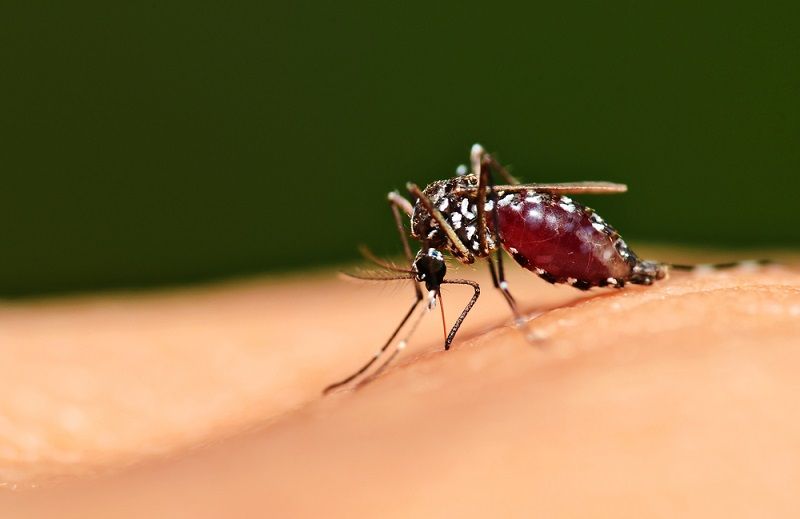Dengue Fever Outbreak in Key West Yields New Clues

Cases of dengue fever are showing up in the Florida Keys, but not in Tucson, Ariz., and exactly why remains a mystery, said researchers, who studied mosquito populations and human behaviors in both areas to shed light on the similarities and differences between them.
The results of their new study have turned up some clues and ruled out others to help explain why Key West had a dengue outbreak, involving 28 cases, between 2009 and 2010, and Tucson did not. The disease is pronounced DENG-gay.
"Key West and Tucson share a lot of risk factors for dengue fever," said study author Kacey Ernst, an assistant professor of epidemiology at the University of Arizona in Tucson.
Despite Tucson's desert climate differing from Key West's wet, tropical conditions, both locations have large populations of the Aedes aegypti strain of mosquito, which can spread the dengue virus to people.
And both cities have a large number of residents who frequently travel to high-risk countries -- Tucson residents may head south to Mexico, and people in Key West may escape to the Caribbean -- where they can become infected while visiting and introduce the virus into their communities once home. [10 Deadly Diseases That Hopped Across Species]
Although the mosquito-borne illness had largely been eradicated in the U.S. since the 1940s thanks to mosquito-control spraying and prevention programs, dengue has recently reappeared with outbreaks in Florida and Texas.
This disease causes an estimated 100 million infections a year worldwide, according to the national Centers for Disease Control and Prevention. When diagnosed and treated, the disease is not usually fatal, but it can be debilitating, with symptoms ranging from high fever and headache to severe bone and joint pain. The bone and joint pain is so severe that the disease has been called "breakbone fever."
Sign up for the Live Science daily newsletter now
Get the world’s most fascinating discoveries delivered straight to your inbox.
The preliminary findings were presented today (Nov. 14) at the American Society of Tropical Medicine and Hygiene's annual meeting in Washington, D.C.
Florida Keys vs. Tucson
To learn more about people's knowledge of dengue fever, and their attitudes and practices toward preventing it, the researchers surveyed 400 households in Key West and 372 in Tucson.
They found that awareness of dengue fever was higher in Key West than in Tucson, and more people in Key West checked daily in and around their homes for standing water, a prime breeding ground for mosquitoes.
Residents in both cities had a similar use of central air-conditioning, a good strategy to avoid getting bitten. And more people in Tucson reported they applied insect repellant and regularly checked their window screens for holes that might let in bugs.
"We heard a lot about the 'Key West' lifestyle playing a possible role in transmission," Ernst said, meaning that these Floridians love to spend time outdoors and keep their windows and doors open for fresh air.
"But we actually found that there were similar behaviors even in Tucson, where it is quite hot during the summer," she said.
Dengue tips
Because the study found few differences between the two cities in terms of human behavior or socioeconomic conditions, the preliminary results point to differences between their mosquito populations as a more likely explanation for the outbreak in one but not the other, Ernst told LiveScience.
Although the exact factors that influence the spread of the virus are complex, Ernst speculated that Tucson's climate might possibly be too hot, too dry, or have too wide a gap between its daily high and low temperatures to support mosquitoes living long enough to transmit the disease.
Another possibility is that there may be small flare-ups of dengue fever in Tucson that are not being detected, she said.
The findings also showed that a fairly large portion of the populations in both communities were not engaged in prevention and control strategies, but Ernst suggested there are many things people can do to lower their odds of contracting the disease.
They can reduce their contact with mosquitoes by using repellant and removing standing water, as well as ensuring there are barriers between them and the mosquitoes, such as wearing long clothing and having screens on doors and windows, to prevent bites.
And residents can support community programs to clean up neighborhoods of containers and old tires that can collect water and breed mosquitoes.
Follow LiveScience @livescience, Facebook & Google+. Original article on LiveScience.
Cari Nierenberg has been writing about health and wellness topics for online news outlets and print publications for more than two decades. Her work has been published by Live Science, The Washington Post, WebMD, Scientific American, among others. She has a Bachelor of Science degree in nutrition from Cornell University and a Master of Science degree in Nutrition and Communication from Boston University.

In a 1st, trial finds vitamin D supplements may slow multiple sclerosis. But questions remain.

Simple blood tests could be the future of cancer diagnosis









